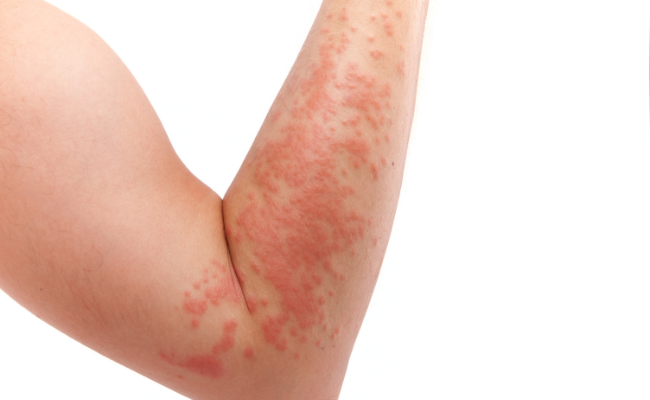How to Treat Polymorphic Light Eruption?
- January 05, 2024
- No Comments

What is Polymorphic Light Eruption?
Polymorphic Light Eruption (PLE) is a dermatological condition characterized by abnormal skin reactions triggered by exposure to sunlight, particularly ultraviolet (UV) radiation. This phenomenon results in itchy or burning rashes that typically develop within hours to days after exposure to sunlight. PLE is frequently observed during the spring or early summer months, a period marked by increased sunlight following reduced sun exposure in winter. This condition is not exclusive to a particular skin type but is more prevalent in individuals with fair skin.
Why Does Polymorphic Light Eruption Occur?
The exact cause of PLE is not entirely understood, but it is believed to be related to an abnormal immune system response to sunlight. When the skin is exposed to UV radiation, particularly UVB rays, it triggers an inflammatory reaction in individuals prone to PLE. Genetic factors may also play a role, as PLE tends to run in families. The immune system's response leads to the development of skin rashes and other symptoms associated with PLE.
How Does Polymorphic Light Eruption Manifest?
PLE presents with a variety of skin manifestations, including small red bumps, raised patches, or blisters. The rash is often accompanied by itching or a burning sensation, making it uncomfortable for affected individuals. Unlike immediate sunburn reactions, the onset of PLE symptoms is delayed, typically occurring within a few hours to a couple of days after sun exposure. This delayed reaction is a distinguishing feature of PLE and contributes to its recognition.
The seasonal variation of PLE is noteworthy. Outbreaks commonly occur during the spring or early summer when individuals are exposed to increased sunlight after a period of reduced sun exposure during the winter months. This highlights the importance of sunlight acclimatization in managing and preventing PLE.
Treatment Solutions for Polymorphic Light Eruption:
- Sun Protection: The cornerstone of managing PLE is sun protection. This includes the regular use of broad-spectrum sunscreen with a high sun protection factor (SPF). Sunscreen should be applied generously to all exposed skin and reapplied at regular intervals, especially after swimming or sweating. Additionally, wearing protective clothing, including hats and long sleeves, and seeking shade during peak sunlight hours is essential.
- Gradual Sun Exposure: A proactive approach to managing PLE involves gradual acclimatization to sunlight. Starting with short periods of sun exposure and gradually increasing the duration can help the skin adapt and reduce the likelihood of a PLE outbreak. This method aims to improve the skin's tolerance to UV radiation.
- Antihistamines: To alleviate the itching associated with PLE, oral antihistamines can be employed. Non-drowsy antihistamines are recommended during the day, while sedating antihistamines may be suitable for nighttime use if itching interferes with sleep. Antihistamines help manage the immediate symptoms of PLE, providing relief to affected individuals.
- Topical Steroids: In more severe cases of PLE, topical corticosteroids may be prescribed to reduce inflammation and alleviate symptoms. These medications are applied directly to the affected areas of the skin and should be used under the guidance of a healthcare professional to avoid potential side effects associated with prolonged steroid use.
Benefits of Treating Polymorphic Light Eruption:
- Symptom Relief: Effective treatment of PLE provides significant relief from symptoms such as itching, burning, and discomfort associated with the skin rash. This relief contributes to an improved overall quality of life for individuals affected by PLE.
- Improved Sun Tolerance: By following sun protection measures and gradually exposing the skin to sunlight, individuals with PLE can often enhance their tolerance to UV radiation. This proactive approach reduces the frequency and severity of PLE outbreaks, allowing for a more comfortable experience in the sun.
- Prevention of Complications: Consistent sun protection not only helps manage PLE symptoms but also prevents potential complications associated with prolonged sun exposure. These complications may include premature aging of the skin and an increased risk of skin cancer. Thus, effective PLE treatment contributes to long-term skin health.
- Enhanced Emotional Well-being: Managing PLE effectively can positively impact emotional well-being. The visible manifestations of PLE can be distressing for some individuals, affecting self-esteem and confidence. Successful treatment alleviates this distress and contributes to improved emotional well-being and confidence in one's appearance.
Comments (0)